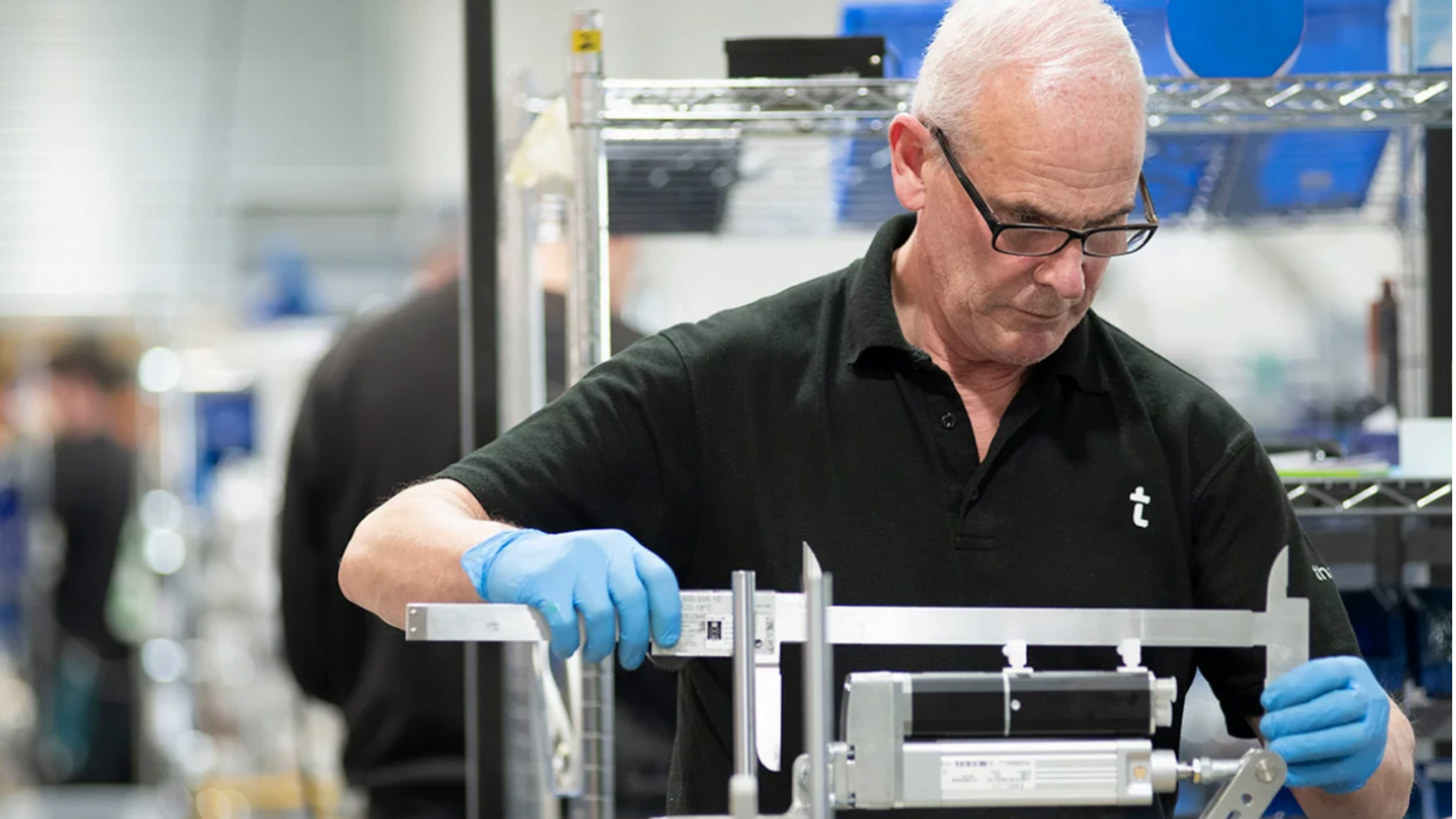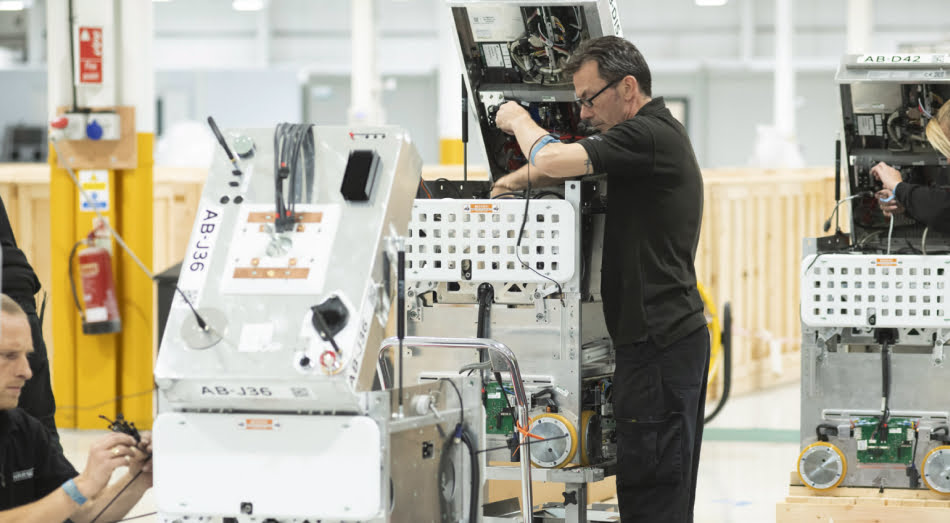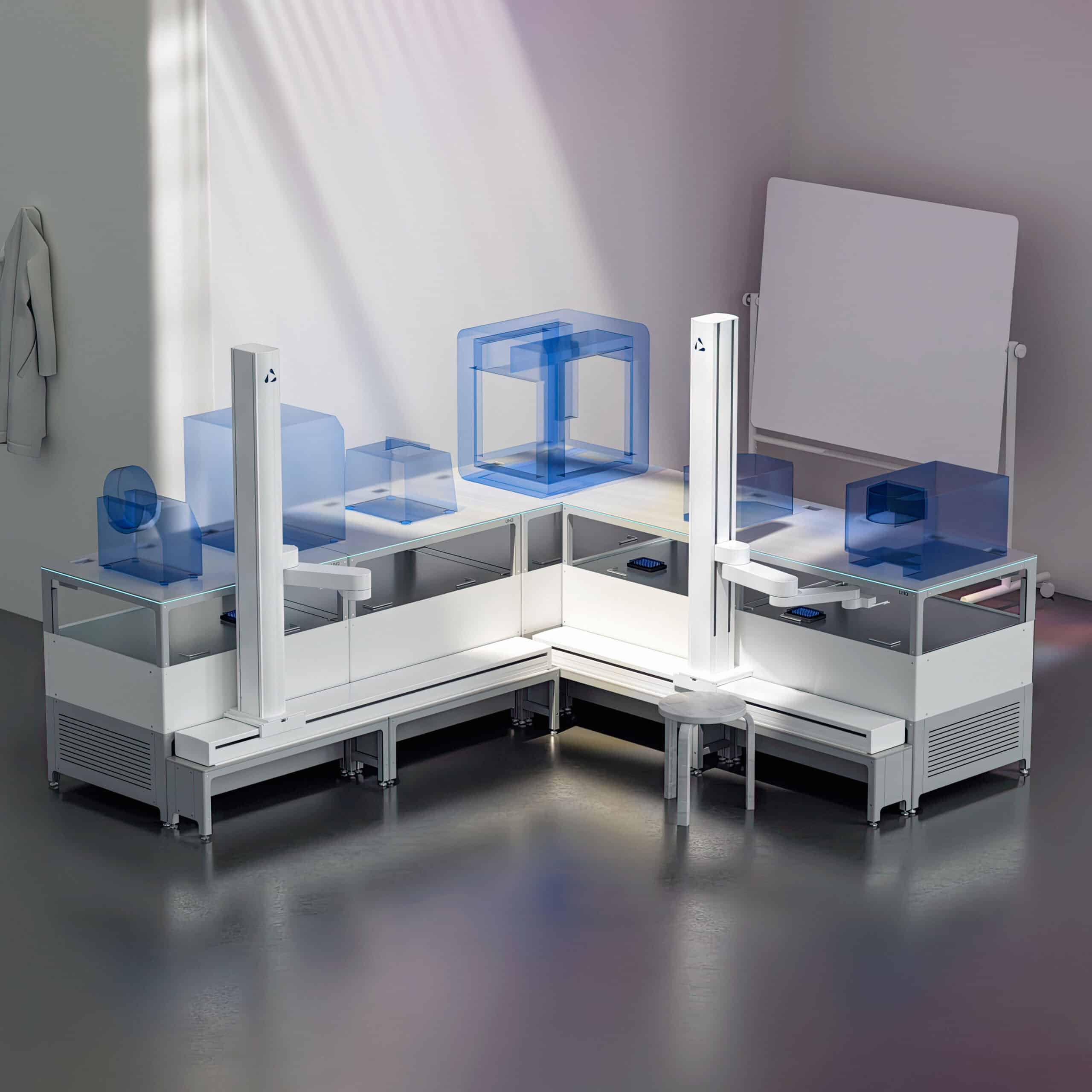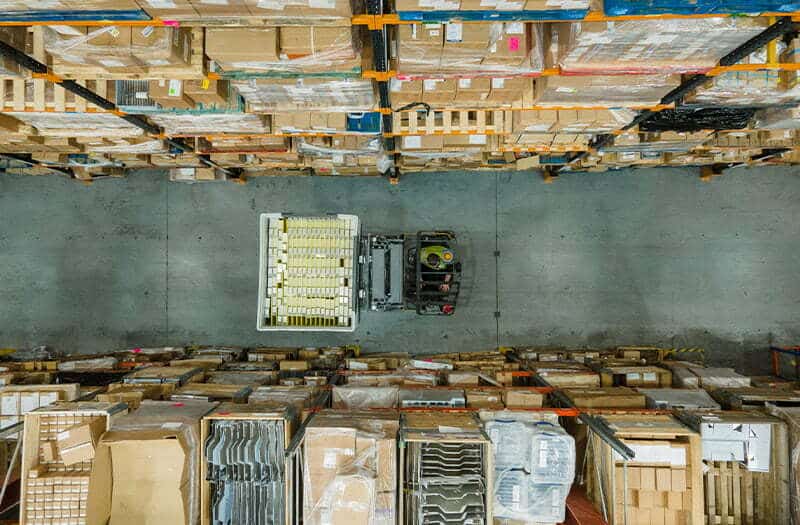
Successful scale manufacturing relies on values as much as processes
Delivering scale manufacture to a high quality is as much a question of values as processes, reveals Gordon Ramsey, Tharsus Head of Manufacturing in this Q&A.
Q: What critical skills, knowledge or resources does a Manufacturing business need in place to scale product manufacture for customers?
For me it’s an alchemy of values, quality and competence. And in that order too.
Q: Values?
Absolutely. Within the team.
An organisation runs on people, just as an army marches on its stomach. The better its people perform, the better it performs. And we all know people perform best when they’re focused and energised.
The question is how to get them there. The answer lies in strong organisational culture. By providing a widely understood set of shared values aligned to a strong identity, organisations can bring people together to harness shared energy and an appetite to deliver.
Here at Tharsus we have clearly defined and deeply understood values which we live and breathe. Aim Higher, Think Wider and Work Together. They’re inherent in everything we do and have enormous impact on our delivery to customers. A strong organisational culture really does enhance corporate performance.
Having this type of this team attitude brings people together to harness shared energy and an appetite to deliver. This is critical when it comes to flexing to the market’s demand. If your team can’t adapt and thrive on the volatility the market could bring, you won’t be able to meet the scaling requirements of a customer.
Q: Quality. Sounds pretty obvious?
Doesn’t it.
But you’d be surprised how often quality is overlooked. Remember the 2008 global financial crisis? I doubt any of us will ever forget it. And I’m sure nobody at VW will ever forget 2015.
The cost of quality breaches is epic. Both in monetary and in human terms.
Take the VW example above. Many billions of dollars in recalls for VW, not to mention lasting damage to the VW brand and its carefully cultivated values. And then the physical damage to the environment, which was incalculable.
When you consider gross breaches of quality, it isn’t difficult to argue the need for manufacturing organisations to adopt robust Quality Management Systems (QMS). And most do, but they are seldom as robust as they need to be to avoid their own form of disaster.
The challenge therefore is mindset. People often approach quality as a tick-box exercise. Ensuring the organisation is compliant(ish) to something deemed important(ish) to the needs of its output.
This is a dangerous way to think, given the potentially catastrophic risks of failure. To be truly robust, a QMS needs to be tailormade to the business to effectively manage, maintain and refine strategy, execution, processes, controls and performance in order to deliver products and services with a consistent level of excellence.
And to do that, it needs to be embedded in a business’s culture. Part of its DNA. Its values driving the ‘how’ with cohesion of purpose. Because ticking boxes can be ruinously expensive
Q3. Competence means being up to the job?
It’s a lot more than that, really.
The easiest way to explain is if you think of the difference between someone doing one thing day in day out and someone else doing several things with the ability to switch between them.
In the first case, you can say this person is capable of carrying out their allotted task. In the second, though, you can say they have competence in their role. The big difference being that they’ve gained an in-depth knowledge of the processes and – it follows- understanding of what needs to be done and when to make things properly.
Which goes considerably further than capability. A properly optimised manufacturing cell won’t run without competent people.
Q: Which leads us neatly to Manufacturing Cell Optimization. What does it mean and how does it impact on scaling?
What’s a properly optimised cell? From the opinion I have consumed lately there doesn’t appear to be much clarity. So, to give you my perspective, let’s start at the beginning.
The cellular manufacturing model groups production of whole products or sub-assemblies into single cells, whereas the traditional or ‘functional’ manufacturing system groups similar processes along the product’s manufacturing journey together.
And the key benefits? Quite simply the ability to scale up (or down) quickly and efficiently keeping parts supply and cost under tight control.
Placing key people and supplies in one strategic location allows more efficient flow of materials, efficient communication and lower inventories. Which in turn deliver higher productivity and the substantial cost benefits which come with – literally – buying in exactly what you need to make exactly what you have to make.
It sounds simple in theory, but correctly optimising cells is challenging. To work properly you need to deploy the right people in the right configuration. Everything, right down to the physical shape and layout of the cell, must be worked out in fine detail.
- Supply chain must be the elephant in every manufacturer’s room right now?
Manufacturers are facing the longest period of steepest challenge in living memory. The scale of this is unprecedented.
- Sounds hopeless.
It does rather. But here at Tharsus we’re taking an alternative view. Quite simply, if the world turns upside down, then turn upside down with it. It’s working, too.
I’ll explain. To start with, we’re holding stock rather than relying on unreliable just in time delivery. This means tying up our working capital in a way we normally wouldn’t, but we’re putting our money where our mouth is to ensure we deliver for our customers.
We’ve invested in software developed by our digital team which is trawling the world wide web searching down individual part numbers across every website on it.
We’re building relationships throughout different tiers of our supply chains. The lines of communication created have led to parts we need gaining priority in their upward journey through the tiers, so getting to us quicker.
And they’re working. We’re running at 97.5% delivery at the moment.
But even before the current crisis, Supply Chain woes were becoming the nemesis of large organisations, bringing to light a wider area of risk inherent in them.
Let’s take a real-life example.
Adidas’ unrelenting pursuit of ever greater efficiency once drove them to take the bold step of joining two new, completely untried supply chain systems together to service one of their largest operational centres. You can probably guess what happened.
That’s right. It didn’t work. It really didn’t work. The 80% under-production which resulted caused their market share to evaporate overnight.
The root of the problem is that all too often organisations take a one-size-fits-all approach to designing and building the chain of suppliers who will supply goods and services to support their operational needs.
In a world where a barcode fault can bring a global giant to the verge of ruin, this is a dangerously wrong approach.
Sure, designing and managing a supply chain is a difficult thing to do. It’s not surprising there’s a tendency to cling to a single – albeit fragile – chain. But to be truly robust, a supply chain needs to be designed around the needs of each individual product. This way it can flex to meet demand.
- We’ve looked at skills and resources. So, what are the common stumbling blocks & challenges Manufactures encounter when trying to scale a customer’s product and what are the processes you can put in place to overcome them?
Everything we’ve covered above boils down to one main stumbling block. Failure to ensure the customer’s need is satisfied. Usually by being inflexible to market fluctuations, often significant ones, and meeting the production demanded of them. To be excellent, you must be able to guarantee excellent quality product whenever and in whatever quantity the customer needs it.
To overcome it, back to people again. You need a team that can dig deep, roll up their sleeves and come together to find the best solution to overcoming the challenges which this game can present sometimes.
- Does Tharsus do scale manufacturing well? What steps have we made, mindset shifts, or processes have we put in place in order to be optimized for full scale manufacturing?
We set ourselves extremely high standards. So from our perspective we don’t do it well enough. Yet. Having lofty goals challenges us to improve and grow every single day. We thrive on this. We believe if you aren’t doing, improving or growing on both individual and team levels, you’re falling behind.
As I touched on before, values play such a critical role. The Tharsus values (Aim Higher, Think Wider and Work Together) coupled with operator competence development and skill matrices, really incentivise and encourage colleague growth and collaboration.
We have integrated calibration for all torque and measurement equipment. We run a system of standard times for each process. Our KPIs and COI process captures data which drives impactful manufacturing improvement opportunities. As we grow, so does the value of all of these things, so we keep on getting better and better.
- And finally. About you. What is it about manufacturing which made you want to dedicate your working life to it?
I’ve always enjoyed making things, making them work better (Sometimes after taking them apart!) and seeing colleagues develop in those environments. Additionally, when challenges arise it’s great to be part of the team resolving the issue and achieving the original goal. You don’t get that in any other job.


